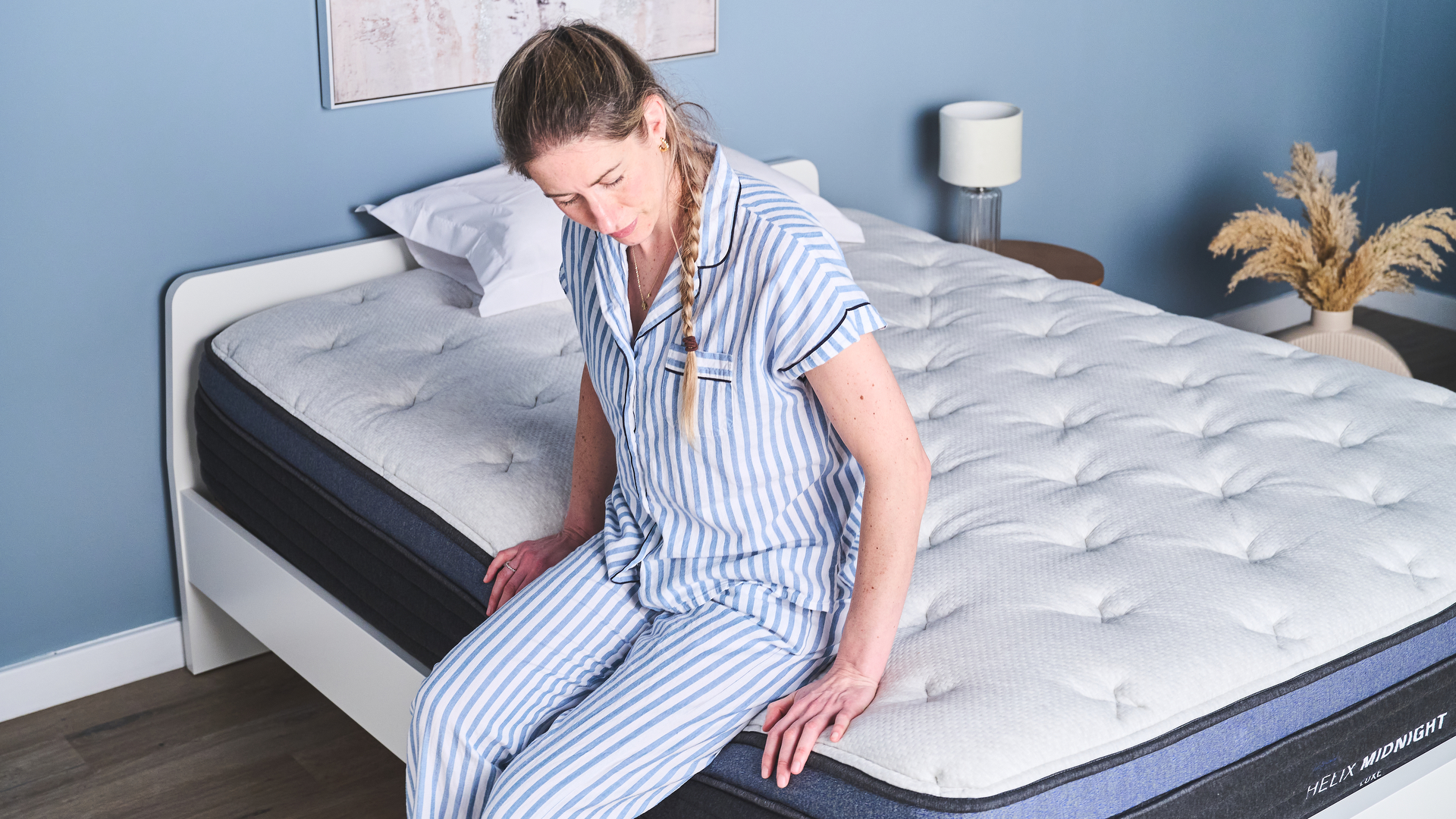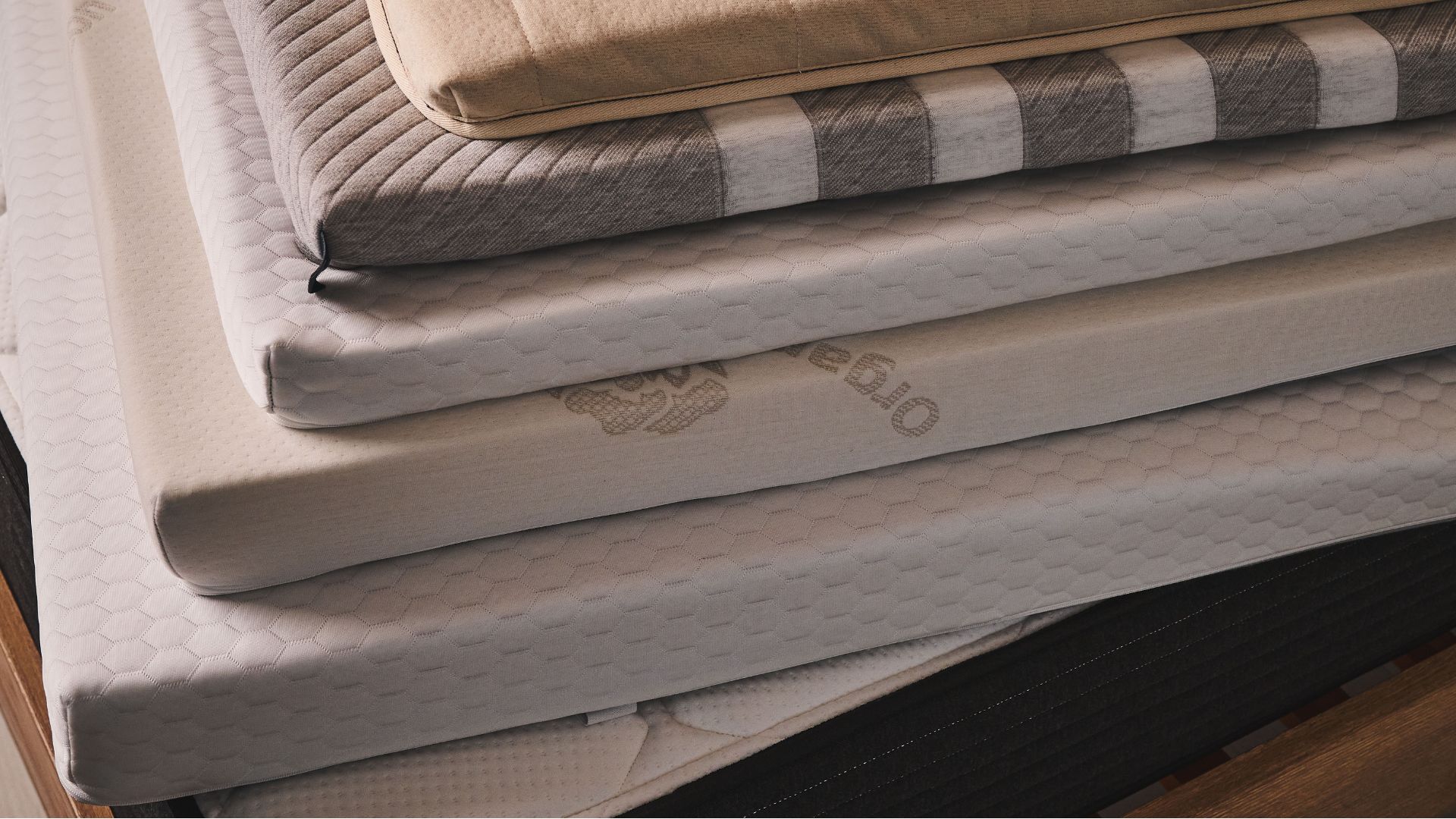What is a mattress in a box? Plus, the signs they suit your sleep best
What you need to know before buying a boxed mattress, from experienced mattress testers

Mattresses in a box have become one of the easiest ways to buy a new bed. You can order from the comfort of your sofa and test-drive the mattress for around 100 nights (on average) before fully committing. With the odd exception, all of the top-rated picks in our best mattress guide are either memory foam or hybrid boxed mattresses.
Even better, this year’s best mattresses in a box are often much cheaper than comparable models sold in stores, yet they’re of the same high quality (our article exploring if beds that come in a box are any good covers this in more detail, with insights from industry experts).
Here we answer your key questions on this modern type of bed, including what is a mattress in a box, how are they made and how do you use them? Also, be sure to check out our guide on how to set up a mattress in a box for more tips on getting the most out of your boxed bed.
What is a mattress in a box?
Why you can trust Tom's Guide
Boxed mattresses get their name from the way they’re packed for shipping. Regardless of the materials used to make them, they’re usually compressed using a machine then tightly rolled and covered in heavy duty protective plastic. The rolled mattress is then placed inside a tough cardboard box for shipping to your front door. You can learn more in our guide to the making of a mattress.
The alternative is a mattress that's delivered flat and has never been compressed. In a battle of bed in a box vs traditional mattress, the former will typically be more convenient, as the delivery process is much easier, and you'll often benefit from lower prices and speedier shipping times. But you won't have to wait for the latter to expand, and you might avoid off-gassing too.
In terms of quality, just because a mattress comes delivered in a box doesn't mean you're automatically getting an inferior product – yes, there are plenty of cheap mattresses that come in a box, but some of today's best luxury mattress are also delivered this way.

The bed in a box market spans all types of mattresses. This category was originally associated with memory foam mattresses, but now it also includes hybrid mattresses of all stripes. However, that doesn't mean every model can be shipped this way. Some luxury models can't be compressed, while other brands simply opt for a traditional delivery process. For example, Saatva prefers to deliver its mattresses flat, proving free white glove delivery to counter the potential inconvenience.
One thing all the best mattresses in a box have in common is a trial period. This is a length of time within which you can test your new bed at home to ensure it’s the right choice for you. The industry-average mattress trial period is 100 nights, but some brands offer shorter trials (Tempur-Pedic’s is only 90 nights) while the gold-standard is the year-long trial offered by brands such as Nectar, DreamCloud, Avocado and Saatva.
How much do mattresses in a box cost?
The price of a boxed mattress depends on a variety of factors. These include the materials used to make it, the size you’re buying (read our guide to mattress sizes if you’re unsure), the manufacturer making it and the time of year you’re buying it.
Premium materials normally add up to premium prices. For example, because they use only certified materials, organic mattresses designed for natural and non-toxic sleep command a higher price tag than most other types of beds. The exception to this is cooling mattresses as they pack in a lot of cooling technology. Both types come boxed and flat (traditional).

Larger sizes cost more too, and the time of year also has an effect because summer is when we normally see price increases compared to other key periods for good mattress sales. These include Black Friday mattress deals and the Labor Day mattress sales in September.
The cost of a budget mattress in a box can start from under $150, and many of the best cheap mattresses made by Zinus, Lucid and Linenspa sell for around $350 for a queen size. At the other end of the scale, a premium boxed bed can cost over $1,700 for a queen, so there’s a big price range.
What are boxed mattresses made of?
Beds-in-a-box come in a few different varieties: these include memory foam mattresses, hybrids (made of a type of foam plus coils or springs), and organic (made with certified natural and organic materials - learn more about what is an organic mattress.)

The mattress is built from different layers of materials (usually three to five layers), often including different types of mattress foams. Here's a look at some typical components:
Breathable cover - to help dissipate heat faster.
Comfort layer - the layer you directly rest on; it can be made from body-hugging memory foam, latex or gel-infused foam for cooling.
Support core - this is the deepest part of the mattress and where you’ll find the denser layer of foam or (for a hybrid) individually wrapped coils.
Edge support - Not all boxed mattresses have good edge support, but its main role is to help you get in and out of bed easier and to sleep and sit on the edge while being supported.
A base layer - this lives at the bottom of the mattress and it works to keep the entire bed stable as you sleep on top of it.
Are mattress in a box comfortable to sleep on?
We’ve tested a lot of boxed mattresses over the years and many of them are supremely comfortable. However this is still a tricky question to answer because comfort, just like mattress firmness, is subjective and influenced by the following factors:
- What support you need and where (which areas of your body)
- Whether you like soft, medium or firm mattresses
- Your body type, height and weight
- Your preferred sleeping position
- Whether you share bed with another person or pet
A good mattress in a box will be made with multiple layers to boost your in-bed comfort, plus it will draw upon various cooling materials to boost breathability to help you sleep more comfortably.
How long do mattresses in a box last?
When talking about how long a mattress lasts, we often say that the average lifespan is around six to eight years. This mostly holds true for mattresses in a box, but again the type and quality of materials used to make it will impact longevity and durability.
Cheaper models can last up to five or six years, or slightly longer if you pair them with one of the best mattress toppers for adding firmness, support, softness or cooling as needed. That’s because toppers act as an extra buffer between the mattress and your body, so more wear and tear is absorbed.

Mid-range beds-in-a-box last for seven to ten years on average, and most will be warranted for 10 years. There are some exceptions though, with the Nectar Mattress, a superb mid-range option, coming with a lifetime warranty (read our Nectar Classic Memory Foam Mattress review to learn more).
Premium models, sold by brands including Purple, Casper and Nolah, and durable latex mattresses can easily last 10 years or longer if you care for them properly. That includes covering them with a good mattress protector and learning how to clean a mattress to prevent it from aging prematurely.
Who should buy a mattress in a box?
Buy a mattress in a box if...
✅ You want a well-made mattress for less: By cutting down on storage and delivery costs (plus the cost of a brick and mortar store) boxed mattresses are often cheaper than traditional beds of the same quality.
✅ You want convenient delivery: A mattress in a box is relatively compact, waking it easier to get to your doorstep and from your doorstep to your bedroom. And in most cases, shipping and returns are free.
✅ You want a wide range of mattresses: Shopping for a boxed mattress online means you have a vast line-up of mattresses to choose from, including memory foams and hybrid, cooling and organic mattresses, different height and firmness options, and even a bigger variety of sizes.
✅ You want to properly test the mattress before committing: Most beds in a box come with a sleep trial of at least 100 nights (excluding the super budget choices.) That gives you a chance to really get to know the mattress before you decide if you want to keep it.

Don't buy a mattress in a box if...
❌ You prefer to shop in store: While some boxed mattress brands do see their beds in brick and mortar stores, the majority of mattress stores still ship the traditional way.
❌ You want a traditional innerspring or feather mattress: You can sometimes find these types of mattresses shipped in a box, but most boxed beds are hybrid or all-foam. For a more traditional design, head to a store.
❌ You need a mattress with specialist features: If you have a medical condition that requires a specialist mattress, you won't find your mattress in a box.
❌ You don't want to unbox your own mattress: A boxed mattress is easier to maneuver around a house, but the actual set-up can be a hassle. Opt for a traditional mattress if you want to avoid unboxing, or look for a brand that allows you to pay for white glove delivery.

The bottom line...
Overall, beds-in-a-box are an excellent way to upgrade your sleep comfort quickly, cheaply and with less risks. But to enjoy all of those perks, we advise buying from a trusted brand or retailer and only if they are offering a trial period of at least 60 nights, plus free shipping (and ideally free returns), and with a clear returns policy and warranty so you know your rights and what to expect if you change your mind and want to return the mattress.
Good brands to consider include Nectar Sleep, DreamCloud, Helix Sleep, WinkBeds, Cocoon by Sealy, Purple, Casper, Nolah, Emma Sleep, Brook + Wilde and Simba.
Sign up to get the BEST of Tom's Guide direct to your inbox.
Get instant access to breaking news, the hottest reviews, great deals and helpful tips.

Claire is a Certified Sleep Science Coach and the Senior Sleep Editor at Tom's Guide who curates our mattress buying guides and oversees our rigorous mattress testing procedures. Claire has over 16 years’ product review experience and is connected to a wealth of globally renowned sleep experts including mattress designers and buyers, neuroscientists, and doctors of sleep medicine. Claire is responsible for all mattress and sleep content published on Tom’s Guide and is our expert on Saatva, DreamCloud, and Nectar mattresses. Claire is also certified to advise people on how to choose a mattress that suits their needs and budget, as well as helping them to create a nighttime routine and bedroom environment that helps them sleep better.
- Ruth HamiltonHomes Editor, TechRadar
